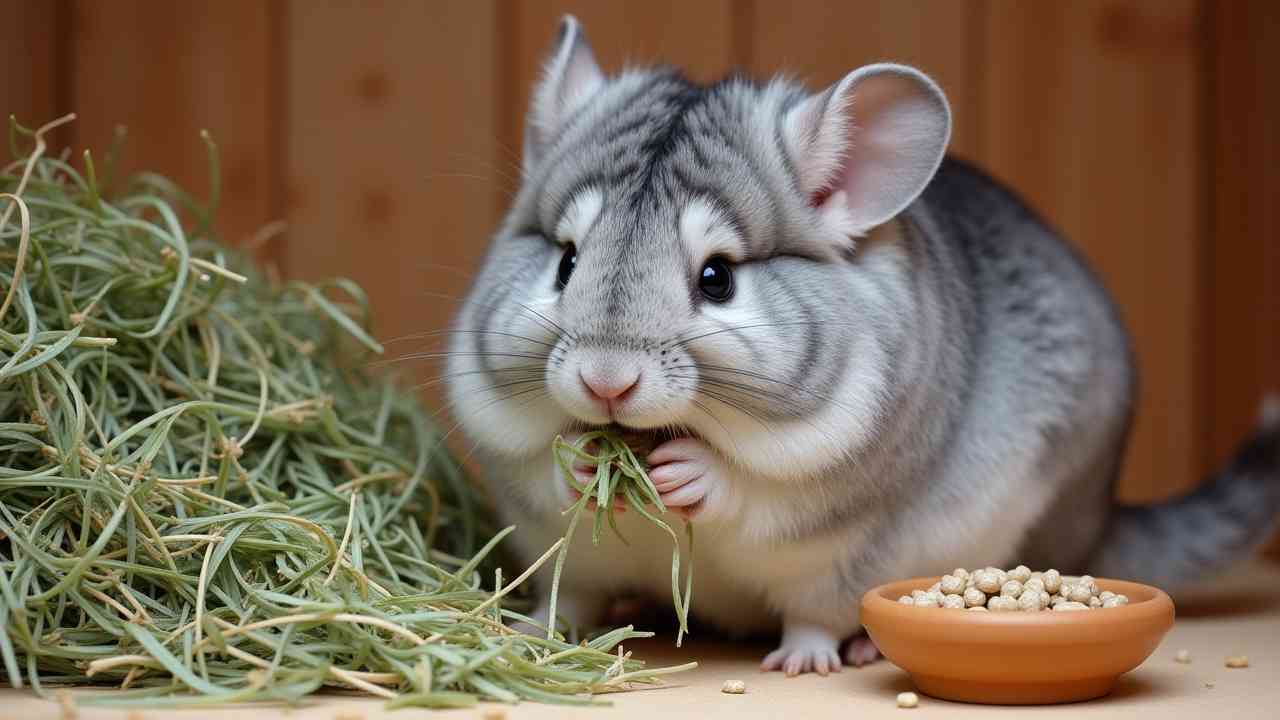
🌾 A Guide to the Chinchilla Diet (What to Feed Your Pet)
🌾 A Guide to the Chinchilla Diet (For a Long and Healthy Life) 🌾
Chinchillas are adorable, active, and long-lived pets. A key to their longevity is a very specific and consistent diet. Unlike many other rodents, chinchillas have an extremely sensitive digestive system that is designed for a high-fiber, low-nutrient diet. Providing the correct chinchilla diet is the most important thing you can do for their health.
This guide will explain everything you need to know about the nutritional needs of these amazing little animals. It is a simple diet, but the rules are not flexible. Let's explore the foundation of chinchilla health. ✅
🤔 First, What Kind of Eater is a Chinchilla?
The most important thing to know about the chinchilla diet is that they are strict herbivores. In their native Andes Mountains, they eat a diet of tough, fibrous grasses and plants. Their digestive system is specifically adapted to this. Their teeth also grow continuously throughout their life, so they need to chew on tough fiber constantly to keep them worn down.
The goal of a pet chinchilla diet is to replicate this as closely as possible. The mantra is simple: high fiber, low sugar, and very low fat.
- What is the #1 Most Important Food? (Hay is Everything!)
The absolute cornerstone of a healthy chinchilla diet, making up about 80-90% of their daily intake, is hay. A chinchilla must have access to an unlimited supply of fresh, high-quality hay 24/7. This is non-negotiable.
Hay provides the essential fiber for their gut to function properly (gut motility). It is also the primary way they wear down their constantly growing teeth. Without it, they can develop fatal dental and digestive problems.
What are the best types of hay?
- Timothy Hay: This is the gold standard. It has the perfect balance of fiber and nutrients for an adult chinchilla.
- Orchard Grass: A great alternative or addition to timothy hay for variety.
Alfalfa hay is a legume, not a grass. It is too rich in protein and calcium for adult chinchillas and should only be given to young, growing kits or pregnant females.
- What About Pellets?
The second part of their diet is a high-quality, commercial chinchilla pellet. This should be a plain, timothy hay-based pellet. It should be given in a very limited, measured amount—typically about 1-2 tablespoons per adult chinchilla per day.
It is crucial to avoid the colorful "fiesta" style mixes. These contain dried fruit, seeds, and nuts, which are extremely unhealthy for chinchillas and can lead to serious digestive issues.
🚫 What Foods and Treats Are Dangerous?
This is the most critical part of the chinchilla diet. Their digestive systems cannot handle sugar, high fat, or most fresh produce. Treats should be given extremely rarely, if at all. Many common "rodent" treats are very dangerous for chinchillas.
You must NEVER feed your chinchilla:
- Fresh fruits and vegetables: They are too high in sugar and water, which can cause life-threatening bloat.
- Nuts and seeds: These are far too high in fat.
- Sugary human treats: This includes candy, cookies, and bread.
- Animal products of any kind.
If you choose to give a treat, a single, tiny piece of a dried rosehip or a pinch of rolled oats once a week is the absolute maximum.
💧 What About Water?
A chinchilla must always have access to fresh, clean water. This should be provided in a sipper bottle attached to their cage, not in a bowl that can be soiled. Change the water daily.
The cozy indoor environment of the autumn season is a perfect time to ensure your chinchilla has a constant supply of fresh hay to nibble on. A simple diet is the best gift you can give your pet. 🐾